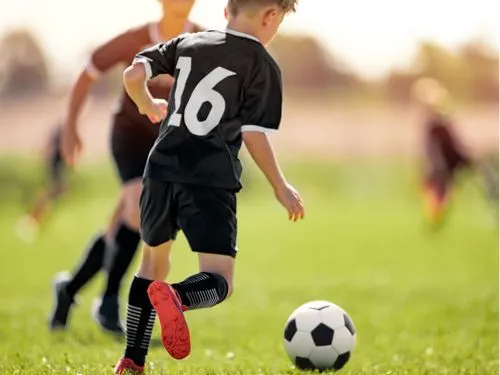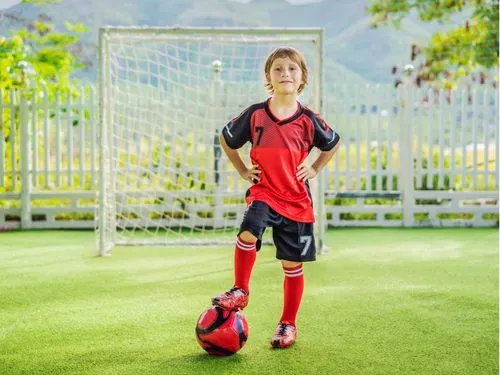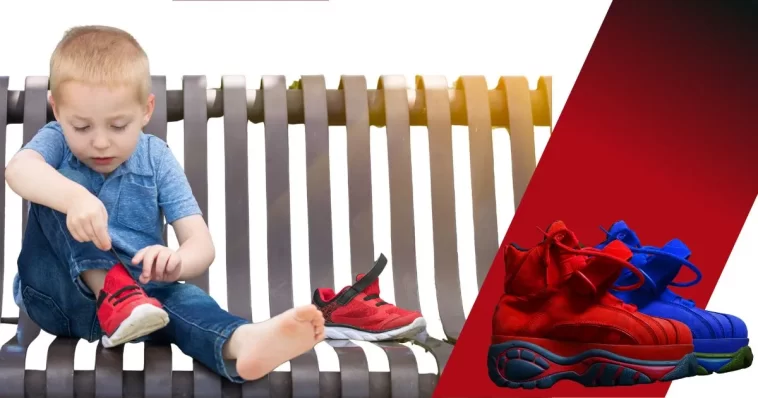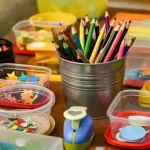Kids’ sports shoes present a common dilemma between style and function. Flashy, trendy options dominate social media and retail shelves, while other shoes prioritize performance and foot health. Balancing trend and functionality is crucial for comfort and proper foot development. This article examines evolving trends in kids’ sports shoes, key functional features to consider, and ways to combine style with practicality.
The Rise of Trendy Kids’ Sports Shoes
In the past decade, kids’ sports shoes have transformed from purely functional items into fashion statements. Bright colors, bold patterns, and brand collaborations have made sneakers a must-have accessory, even for children. Social media platforms like Instagram and TikTok have accelerated this trend, with influencers, young athletes, and even parents showcasing the latest sneaker drops. Brands like Nike, Adidas, and Puma are not only competing on performance but also on style and hype. Limited-edition designs, neon colorways, and characters from popular movies or cartoons are now major selling points.
For example, the latest collaboration between a major sneaker brand and a popular animated series has generated a surge in demand, with kids eager to showcase their favorite characters on their shoes. These shoes often feature glow-in-the-dark elements, playful graphics, and unique textures. While they certainly excite children and make them feel stylish, parents need to consider whether these shoes are suitable for sports or daily play.

Trends are also influenced by adults, with parents often seeking mini versions of their own fashionable sneakers for their children. This has created a market for shoes that look good in photos, match outfits, and fit the latest fashion narratives. While trend-focused shoes can boost confidence and self-expression, they often lack the features that protect growing feet during active play.
The Importance of Functional Features
While style can be enticing, the primary purpose of a sports shoe should be function. Children’s feet are still developing, and improper footwear can lead to discomfort, injuries, or long-term foot problems. Key functional features to consider include cushioning, arch support, stability, and breathability.
Cushioning is crucial, especially for active kids who run, jump, and participate in various sports. Shoes with good cushioning absorb impact, reducing strain on knees, ankles, and feet. Brands often use foam midsoles, gel inserts, or air pockets to provide this feature. For instance, a running shoe with a responsive foam midsole can make all the difference during soccer practice or daily playground activity.
Arch support is another essential factor. Children have different arch types, and a shoe with proper support helps prevent flat feet or overpronation. Shoes designed with contoured footbeds and reinforced midsoles provide the necessary support for growing feet. Stability features, such as firm heel counters or wider bases, help prevent ankle sprains and improve balance, especially for sports like basketball or tennis.
Breathability is often overlooked, but it is essential for comfort and hygiene. Shoes made with mesh panels or perforated materials allow for improved air circulation, which helps reduce sweat and odor. In warmer climates, breathable shoes can prevent rashes and blisters that may discourage children from being active.
Finally, durability and grip are essential functional considerations. Kids tend to be rough on their shoes, and a durable outsole with non-slip patterns ensures safety on various surfaces. A well-constructed shoe can withstand the rigors of school playgrounds, sports courts, and hiking trails without falling apart after a few weeks of use.
Trend vs Function: Finding the Balance
The real challenge for parents is finding shoes that strike a balance between aesthetic appeal and functional performance. Fortunately, many brands have recognized this need and now offer shoes that blend both worlds. These hybrid designs combine bold colors and fashionable silhouettes with the technical features children require.
For example, a brightly colored running shoe with character motifs may also have reinforced arch support, a cushioned sole, and a breathable upper. This allows kids to enjoy the fun design while their feet remain protected. Similarly, some high-top sneakers designed for basketball offer stylish designs that appeal to young trendsetters without compromising ankle stability.
Parents can approach the trend versus function debate by assessing their child’s daily activities. If a child participates in organized sports, function should take priority; however, if shoes are primarily for casual wear or social events, trendier options may be acceptable. Rotating between shoes designed for performance and stylish sneakers can satisfy both needs.
Another helpful tip is to involve children in the selection process. Asking them to choose colors or patterns within a functional shoe model encourages autonomy while ensuring the shoes meet health and safety standards. This also fosters a sense of personal style and pride in their footwear, which can boost confidence.
Popular Trends in Kids Sports Shoes
Several trends have emerged in recent years that combine style with functionality. These include chunky sneakers, character-themed designs, customizable shoes, and sustainable materials.
Adult fashion trends inspire chunky sneakers, offering extra cushioning and stability. They often have exaggerated soles and eye-catching color combinations. While some parents may worry about bulkiness, modern designs ensure the shoes remain lightweight and flexible.
Character-themed designs remain the preferred choice among younger children. Shoes featuring superheroes, cartoon characters, or movie franchises attract kids’ attention and encourage them to wear their sneakers consistently. Functional elements are often built into these shoes to ensure they are suitable for play.

Customizable shoes are gaining popularity, as children can mix and match colors, add patches, or choose personalized graphics. This trend fosters creativity while still allowing brands to incorporate performance features, such as shock absorption and supportive footbeds.
Sustainable materials have also entered the kids’ market, reflecting growing awareness of environmental responsibility. Shoes made from recycled materials or eco-friendly fabrics appeal to parents who value sustainability without compromising durability or performance.
Risks of Prioritizing Trend Over Function
While trendy shoes are appealing, prioritizing style over function can lead to issues. Shoes that lack proper support or cushioning may cause discomfort, blisters, or even contribute to long-term musculoskeletal problems. In sports, ill-fitting or non-functional shoes can increase the risk of injury.
A common problem is choosing shoes that are too tight for aesthetic reasons. Kids may need a half-size or full-size larger to accommodate growing feet, but parents sometimes prioritize looks over comfort. Shoes that pinch or restrict movement can lead to toe deformities or stress on joints.
Additionally, some trend-focused shoes utilize less durable materials, which can lead to rapid wear and tear. This not only shortens the lifespan of the shoes but can also be a safety concern if traction is compromised.
Tips for Selecting the Right Kids’ Sports Shoes
When shopping for kids’ sports shoes, parents can employ several strategies to strike a healthy balance between trend and function.
- Measure feet regularly. Children’s feet proliferate, so regular measurements ensure a proper fit. A half-inch of space from the longest toe to the end of the shoe is generally recommended.
- Check for arch support. Shoes should have adequate support for the child’s arch type. For young children or those with flat feet, additional insoles may be helpful.
- Prioritize cushioning and shock absorption. Especially for high-impact activities, these features protect joints and encourage comfortable movement.
- Test stability and grip. Walk on different surfaces to ensure the shoe provides a secure and stable feel.
- Consider breathability and materials. Look for mesh or perforated panels for airflow and quick-drying properties.
- Rotate shoes. Having one pair for sports and another for casual wear allows children to enjoy trends without compromising on function.
- Involve the child. Allowing kids to choose colors, patterns, or designs within functional options encourages them to wear their shoes consistently.
The Role of Brands and Retailers
Brands and retailers play a crucial role in helping parents navigate this balance. Many companies now highlight functional features alongside design elements in their marketing, making it easier to make informed choices. Some stores even offer specialized fitting services for children’s athletic shoes.
Additionally, educational campaigns by brands emphasize the importance of foot health, helping parents distinguish between fashion sneakers and performance footwear. Retailers can also create curated selections that combine both trend and function, simplifying the decision-making process for busy parents.
The Future of Kids’ Sports Shoes
The future of kids’ sports shoes looks promising, with continued innovation in both style and technology. Smart shoes equipped with sensors may track activity levels or provide feedback on running form, promoting healthy habits from a young age. Eco-conscious materials will likely become more mainstream, aligning with global sustainability efforts.
Fashion trends will continue to influence children’s preferences, but parents and designers are increasingly aware of the importance of function. With thoughtful design, it is possible to create shoes that both excite children aesthetically and protect their developing feet.
The Right Fit for Every Step
Kids’ sports shoes are more than just an accessory. They play a vital role in foot health, athletic performance, and overall comfort. While trends can make shoes visually appealing and boost confidence, functional features should remain a top priority, especially for active children. Parents can strike a balance by understanding the latest trends, knowing the key functional elements to look for, and involving children in the selection process.
By carefully considering both trend and function, it is possible to give children shoes that are stylish, comfortable, and safe. The right pair not only supports growing feet but also encourages active play, creativity, and self-expression. As trends continue to evolve, parents and kids can enjoy footwear that satisfies both style and performance needs, making every step both fun and healthy.



